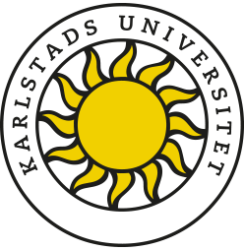Andrea Schalley, Professor in English Linguistics
You may wonder at times how you can get an overview of hot topics in language education research, to see what research could possibly be beneficial for you and your professional development. One option is, of course, to attend an overview conference and try to take stock of the topics under discussion. This is what I have attempted by attending the 19th World Congress of Applied Linguistics (AILA 2021) – originally scheduled to take place in Groningen, the Netherlands, during August 2020, but due to the Covid-19 pandemic moved to a virtual format and held in August 2021 instead.
The World Congress of Applied Linguistics is the flagship conference in the field of applied linguistics, steered by the international federation of national and regional applied linguistic associations, the International Association of Applied Linguistics (AILA). In non-pandemic times, AILA conferences take place every third year and they travel around the globe (2014 Brisbane, Australia; 2017 Rio de Janeiro, Brazil; 2021 Groningen, the Netherlands; 2024 Kuala Lumpur, Malaysia). They attract a huge number of participants, as the impressive figures from this year’s conference confirm: AILA 2021 had 2181 registered attendees, 2014 of which presented their work, and 384 participants organised and/or moderated the 164 symposia that constituted the week-long conference. Each symposium addressed a specific topic in applied linguistics, the branch of language research that is directly oriented towards practical, everyday problems related to language and communication. Prominently among participants’ interest areas are, not surprisingly, many that relate to language education, as can be seen in the top five areas nominated by participants:
1. Language teaching and learning
2. Multiple languages
3. Language in use
4. Linguistic social issues
5. Language (teaching) resources
This is reflected in the symposia themselves, too. The overwhelming majority focused on language teaching and learning, with some prominent trends within this area standing out. For each of the trends listed in the following, the titles of three relevant AILA 2021 symposia are included in order to give an impression on what was discussed at the conference. Many more could be mentioned, and some naturally straddle across categories:
- Multilingual learning:
- International perspectives on educational models for newly immigrated (refugee) children, adolescents, and young adults: Options, challenges & best practices
- Multilingual education or how to learn to teach multilingual learning
- New dynamics for new cultural, linguistic and digital realities: Adapting mainstream learning environments to and for migrant learners
- Interaction and language use in the classroom / classroom discourse:
- Classroom discourse: Intercultural, interactional and assessment perspectives
- Conversation analysis and interactional linguistics in foreign language learning: Understanding what provides for ‘competent’ interaction
- L2 classroom discourse: Micro-analytic, multimodal, and multilingual perspectives
- Age as a factor in language learning:
- Age as a critical factor in L2 learning – at any age or none!
- Early foreign language learning in classroom settings
- Language learning never gets old: Linguistic, social and cognitive effects of third age language learning
- Digitalisation and technology-mediated language learning and teaching
- Emergent orchestration in technology-mediated language learning and teaching
- Language teacher education, intercultural communicative competence and the ‘Web 4.0’: Scaling up with virtual exchange
- Technology-mediated corrective feedback and instruction in language learning
- Learner characteristics and learner diversity
- Learner diversity as an asset in the (inclusive) foreign language classroom: Challenges and solutions
- The role of individual differences in the language learning of children and adolescents.
- Variables affecting foreign language acquisition in bilingual programs
- Language learning resources
- Broadening perspectives: Theorising, researching and practising literature in language teaching
- Innovative approaches to TESOL materials and textbook research
- What do we know and where do we go? : Emergent definitions of “materials” and “materials use” in language teaching and learning
- Assessment and testing
- Connecting second language acquisition research to language testing
- Proficiency: Wanting it in instruction, and seeing it in varied assessment
- Re-envisioning language assessment to meet the needs of learners in a changing world: What can diagnostic and dynamic assessment contribute?
As it happens, CSL scholars have addressed aspects of nearly all of these trending research areas in their own work, and you can find some information on ongoing as well as completed projects on CSL’s website.
While unfortunately the recorded video presentations of symposium participants are only available for a short period to conference attendees, the keynote presentations are available freely and in full. You can access and watch them here. For instance, Carmen Muñoz (Spain) presented on “Language learning through audiovisual input in and out of the classroom”, with a specific focus on the role of multimodal input (video captions and subtitles) in language learning. There is lots to discover, also in the other keynotes. Enjoy!
Andrea Schalley, October 2021

